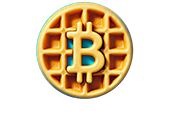The frontier of quantum computing is not just about building faster processors; it’s about opening doors to entirely new realms of physics. In a landmark achievement, researchers at Google Quantum AI have used their superconducting quantum processor to do just that — creating a veritable “portal” to observe and manipulate a long-theorized, never-before-confirmed state of exotic matter known as non-Abelian anyons. This discovery is more than a scientific curiosity; it is a critical step toward building a fault-tolerant quantum computer and unlocking profound new understandings of our universe.
How Was This “Portal” Opened?
The breakthrough did not involve a physical portal but a computational one. Google’s team utilized their Sycamore quantum processor, the same chip that demonstrated “quantum supremacy” in 2019, to simulate an incredibly complex quantum environment.
The Hardware: The Sycamore chip consists of qubits — quantum bits that can exist in a state of 0, 1, or both simultaneously (superposition). These qubits are connected and can influence each other through quantum entanglement.The Software (Algorithm): Researchers programmed the qubits to mimic the theoretical conditions under which non-Abelian anyons were predicted to emerge. This involved creating a specific two-dimensional grid of entangled qubits and manipulating them with precise microwave pulses.The “Smoking Gun” (Braiding): The key to confirming these anyons was a process called braiding. Just as you can braid strands of hair, theorists predicted that these particle-like excitations could be braided around each other in spacetime. The unique, defining feature of non-Abelian anyons is that this braiding changes the state of the system in a fundamental and “non-commutative” way (meaning Braid A followed by Braid B is different from Braid B followed by Braid A). Google’s experiment successfully performed this braiding and observed the predicted tell-tale signatures, confirming the existence of these exotic quasiparticles in their simulated world.
Why Pursue Exotic Matter?
The pursuit of non-Abelian anyons is driven by two powerful motivators:
The Fundamental Quest for Knowledge: Our understanding of the universe is built upon the Standard Model of particle physics, which categorizes particles as either fermions (e.g., electrons) or bosons (e.g., photons). Non-Abelian anyons belong to a third, theoretical category called anyons, which only exist in two-dimensional systems under specific conditions. Proving their existence validates decades of advanced theoretical physics and opens a new chapter in our understanding of quantum mechanics and the fabric of reality.The Practical Goal of Topological Quantum Computing: The “holy grail” of quantum computing is fault-tolerance. Today’s qubits are incredibly fragile and prone to errors from the slightest environmental noise. Non-Abelian anyons are topological states — their properties are protected by their overall geometric configuration, making them incredibly robust against local disturbances. Information stored in the braided paths of these anyons would be inherently stable, drastically reducing error rates and paving the way for practical, large-scale quantum computers.
Benefits and Implications of the Discovery
This success is not just a theoretical win; it has tangible benefits:
Validation of a Path Forward: It provides the first solid experimental evidence that the topological approach to quantum computing is viable. This will galvanize research and investment in this specific direction.A New Tool for Physics: Quantum processors are now proving to be powerful “quantum simulators,” allowing scientists to explore states of matter that are impossible to create or observe in traditional materials or particle colliders. This opens up a new era of digital physics experiments.Progress Towards Robust Qubits: While engineering actual topological qubits from anyons is still a future goal, this experiment is a critical proof-of-concept. It demonstrates the core principle: that information can be encoded and manipulated in a topologically protected way.
Future Goals: What Comes Next?
Google’s experiment is a magnificent starting point, not a finish line. The immediate future goals are clear:
Increasing Complexity and Fidelity: The next step is to create more stable and complex braiding operations with higher precision, moving from a few anyons to larger, more robust arrays.Demonstrating Quantum Gates: Researchers must show that braiding these anyons can perform actual logical operations (quantum gates) for computation, proving their utility as qubits.Integration: The long-term goal is to integrate these topological principles with existing quantum hardware to create a hybrid system that is both powerful and stable, ultimately leading to a full-scale, fault-tolerant quantum computer.
Conclusion
Google’s creation of a “portal” to non-Abelian anyons is a watershed moment. It brilliantly showcases the dual role of advanced quantum processors: they are not just calculators for solving problems but are also microscopes for exploring the deepest and most exotic corners of physics. By confirming a 40-year-old theory, they have not only expanded our fundamental knowledge but have also illuminated the most promising path toward building the resilient quantum computers of the future. This achievement bridges a crucial gap between abstract mathematical theory and tangible engineering reality, marking a giant leap forward in the second quantum revolution.
Frequently Asked Questions (FAQ)
Q: Did Google actually create a wormhole or a real portal?A: No. The term “portal” is a powerful metaphor used to describe the breakthrough. Google used a quantum processor to simulate the conditions of a theoretical two-dimensional universe where the rules of physics allow for non-Abelian anyons to exist. They opened a window into that digital realm, not a physical portal in spacetime.
Q: What exactly is an anyon?A: An anyon is a type of quasiparticle — a collective excitation that behaves like a particle — that only exists in two-dimensional systems. Unlike fermions and bosons, whose behavior is defined by simple statistics when they swap places, anyons have more complex (“any”) statistical behavior. Non-Abelian anyons are a special, rare type with properties perfect for quantum computing.
Q: How is this different from Google’s “quantum supremacy” demo?A: The 2019 “supremacy” experiment was about raw computational power — showing a quantum computer could solve a specific, contrived problem faster than any supercomputer. This new experiment is about fidelity and simulation. It uses that computational power to perform a precise, scientifically meaningful simulation of quantum mechanics itself, yielding a new physics discovery.
Q: Does this mean practical quantum computers are coming soon?A: Not immediately. This is a foundational research breakthrough. It validates a path to building stable quantum bits, but engineering a full-scale, fault-tolerant quantum computer using this technology remains a long-term goal, likely still more than a decade away. However, it significantly de-risks and accelerates the journey toward that goal.
Q: Could this discovery have other applications outside of computing?A: Potentially, yes. Any discovery in fundamental physics has a history of leading to unexpected applications. A deeper understanding of topological states of matter could influence the development of new materials with novel electronic properties, advanced sensors, and further exploration in quantum field theory and cosmology.









